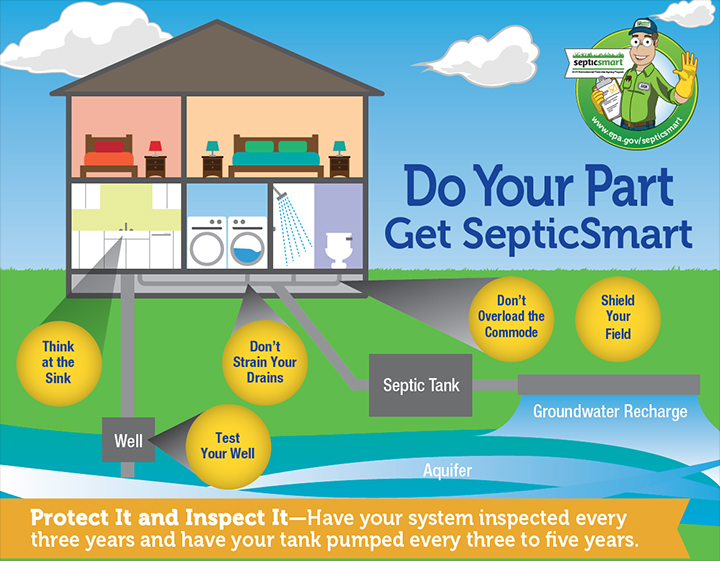Septic System Operation and Maintenance
The Department of Planning & Building encourages property owners to regularly maintain their onsite wastewater treatment systems for optimal functioning. The Department provides forms for reporting the condition of systems and verifying system capacity for building expansions. This page also includes educational information and quick tips on the proper use of onsite wastewater treatment systems.
 Infographic depicting ways to prolong the use of the septic system. For more information, visit www.epa.gov/septicsmart
Infographic depicting ways to prolong the use of the septic system. For more information, visit www.epa.gov/septicsmart
Septic System Forms
- Septic Tank Inspection Report (Form BLD-1030)
- Existing Septic Verification (Form BLD-1019)
- Onsite Wastewater Treatment Systems After a Flood (Form BLD-3027)
Property owners shall have a licensed septage hauler inspect the onsite wastewater system at the time that the tank is pumped and septage is removed. The maintenance technician shall complete the Septic Tank Inspection Report and provide a copy to the system owner and the Department of Planning & Building.
Applicants seeking to permit additions or modifications for an existing structure with an onsite wastewater treatment system must complete the Existing Septic Verification Form and submit a Plot Plan.
The Department encourages property owners to consider the Top 10 Ways to be a Good Septic Owner and to have systems inspected and pumped every 3 to 5 years. The County’s Environmental Health Department maintains a program for Permitted Liquid Waste Haulers who are authorized to pump septic systems.
FAQs
Consult the Homeowner Guide to Septic Systems (English) (Español) for in-depth information on how your septic system functions and the necessary maintenance requirements.
There are some simple Dos and Don’ts (English) (Español) for prolonging the functionality of septic systems and preventing the need for costly repairs.
Yes, the County’s Washing Machine Greywater Disposal Guide provides design guidance and requirements for proper greywater disposal.